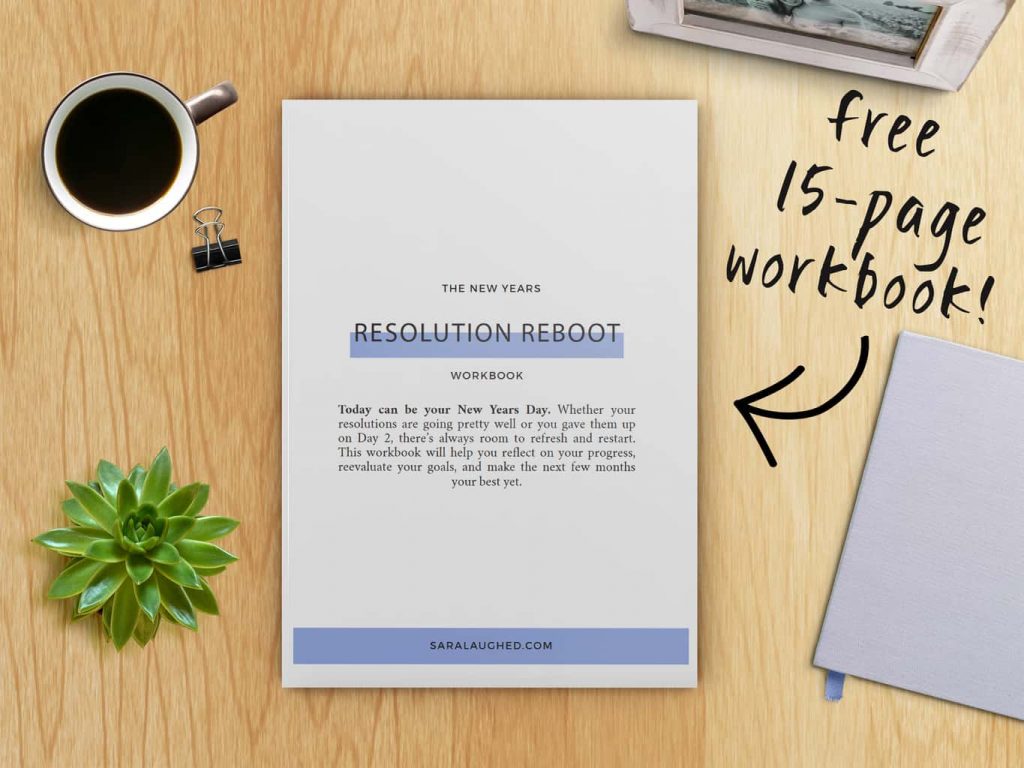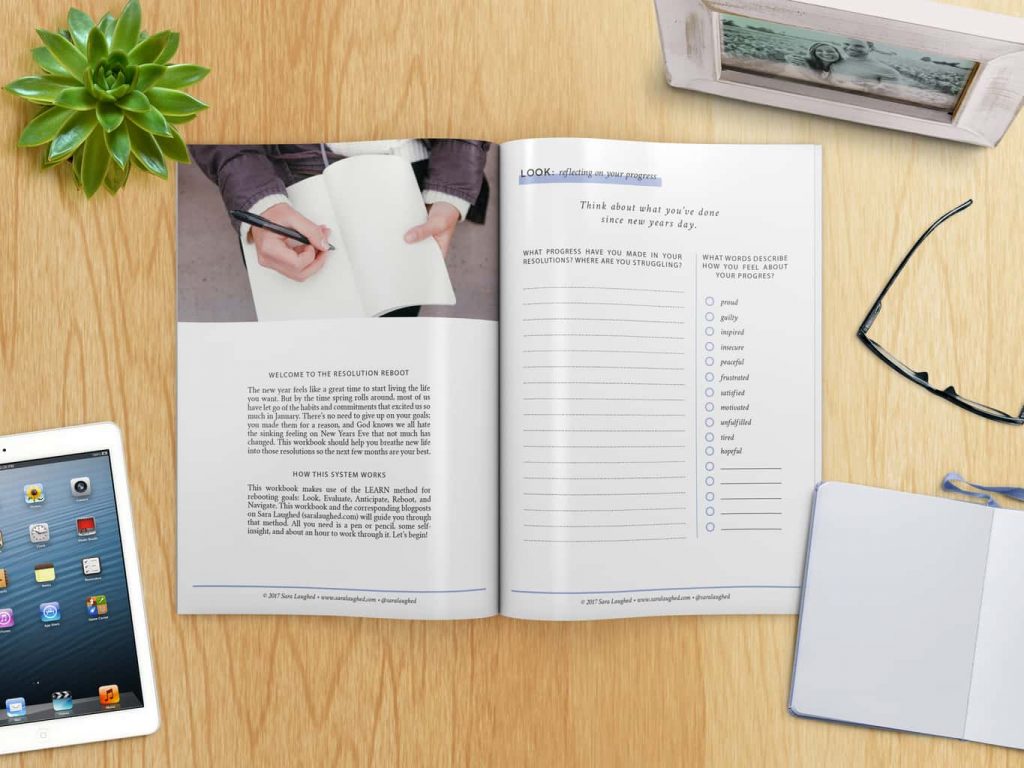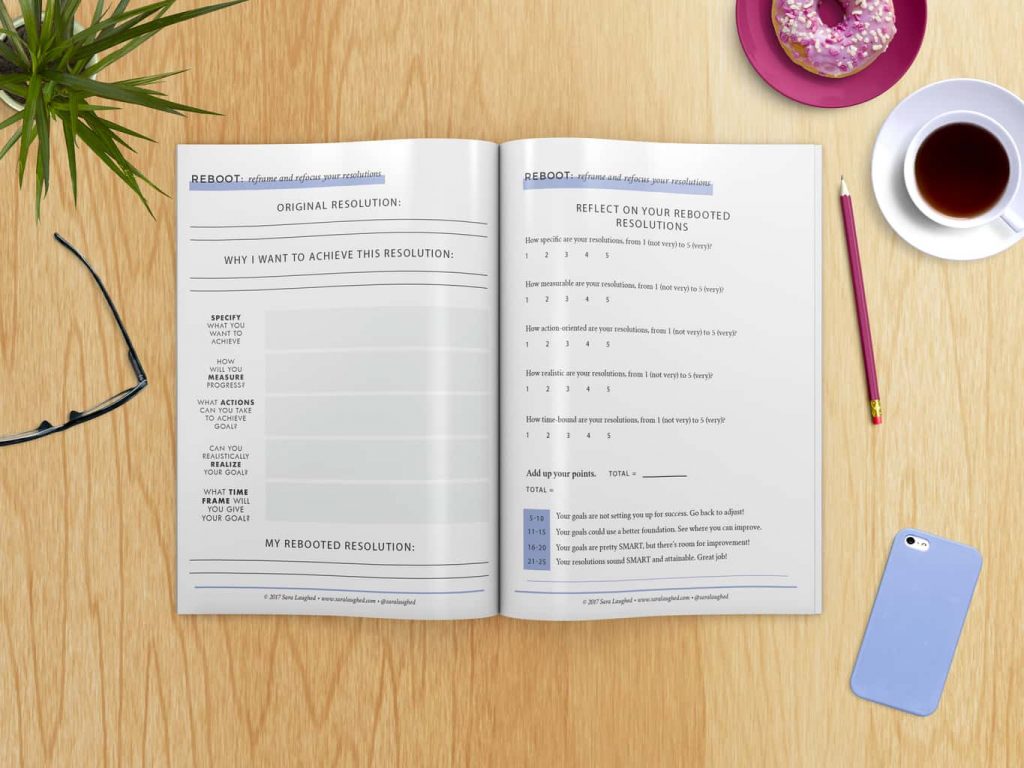I loved working out with her, because she pushed me to my limits without ever yelling at me (and I never once had to roll a tire up a hill, so Biggest Loser totally lied). We’d often chat during our sessions, talking as she helped me lift weights or as I huffed and puffed on the treadmill. A few weeks into the new year, I asked her how business was doing. She told me that she was working overtime because this was her busiest season.
“When does it die down again?” I asked.
“February,” she said.
That always seems to be the way with resolutions. We psych ourselves up on New Years Eve about how this is going to be our best year yet, but within three weeks we’re back to our old habits. I’ve done it, too: I once made 17 resolutions and barely completed a single one by the end of the year. But the last year and a half have been different; I’ve found a system that helps me achieve my goals and breathe new life into my resolutions whenever I lose focus. It’s called LEARN.
Get Started With the Free Workbook
The first thing you’ll want to do is download the free workbook that comes with this blogpost, which is stored in my resource library. To get the password to the library, you can subscribe to my mailing list here. The confirmation email when you sign up includes the password to the library and access to all my free downloads.
Step One: Look back at your progress
The first step in rebooting your new years resolutions is to reflect on what progress you’ve made. Look back at the last few months and ask yourself the following questions for each of your resolutions:
- What progress have I made in keeping this goal?
- Where did I fall short?
- Which areas did I struggle with most? Discipline? Consistency? External support?
- How do I feel about my progress in this area? Proud? Guilty? Hopeful?
It’s important to know that, no matter how much or little progress you’ve made, there’s no reason to feel guilty about falling short of your resolutions. We almost always choose goals and set checkpoints that are not realistic, because we base our goals on our maximum-output potential.
That is to say, we often set a goal to be what we would achieve if we gave it our 100% effort, every day. But you can’t give your 100% to marathon training or learning Arabic if you’re also giving your 100% to being a student, or doing your full-time job, or taking care of a family. You need to be able to rest and take breaks, and factor that into the goals you set.
I should also say that even if your goals are realistic and you fell short, there is no reason to feel guilty. We all struggle to live up to our standards for ourselves from time to time. What matters is that you try, and try again.
Step Two: Evaluate what did and didn’t work

Next, we’re going to look at why we struggled where we did. The following questions are laid out on page 4 of the workbook, but you can also answer them in a separate notebook:
- Which resolutions did you prioritize most? Least?
- How did you work on your resolutions?
- What worked about that strategy?
- What didn’t work?
- What lessons have you learned?
- Are there any habits or feelings you’d like to let go of, moving forward?
As you answer these questions, do your best to look for patterns that tie in to habits. For example, I’m having a hard time sticking to my reading goal, and I realized it was because reading is not tied to any particular activity or time of day for me. There was no outside “trigger” to prompt me to start reading. Establishing an evening routine that includes reading could make a big difference in how much I read.
Step Three: Anticipate the coming months

The next step of this system requires looking forward to where we want to be in three months and anticipating what will help us succeed. Answer the following questions in the workbook or a notebook:
- How would you like to feel 3 months from now?
- If you could achieve anything in the next 3 months, what would you do?
- How are your current goals bringing you closer to that endpoint?
- Are there any hopes you have that you haven’t set a goal for? Which ones?
- What would help you succeed in your goals in the next few months?
Next, write a few words of encouragement to yourself for the next few months. Ideally, it should be a phrase that’s short enough to remember when you’re feeling demotivated, but strong enough to push you forward. Here are a few options:
With passion and perseverance, I can achieve what I want.
or
I choose to become the person I want to be.
Finally, put together a brain map or mood board of the things that inspire you to go after your goals in the coming months. For example, if you’re trying to get fitter, include images of athletes who inspire you, or if you’re learning a language so you can travel, use photos of the destination you’d like to visit. Hang this up in a prominent place where you can see it regularly.
Step Four: Reboot your resolutions using SMART goals
If you’re at all familiar with goal-setting, you’ve probably heard of SMART goals before. If not, don’t worry; it’s a pretty easy system to understand. SMART goals are:
Specific
It’s hard to follow up on vague goals. If your resolution isn’t clearly defined, how are you supposed to take the steps to make it happen? Specifying exactly what you want to do or achieve makes it easier to act.
Instead of “I want to learn to dance,” try, “I want to take a weekly salsa class.”
Measurable
Having a system in place for keeping track of your progress is vital to succeeding in your resolutions. If you can’t see how you’re doing, you can’t make a plan for where you’re going.
Instead of “I’ll know when I’m done writing,” try, “I’ll write one chapter per month.”
Action-oriented
The best goals contain an action component that clearly states how you’ll get to where you want to go.
Instead of “I’ll read more,” try, “I’ll read every night before bed for 30 minutes.”
Realistic
If your gosls are too ambitious, you’ll feel demoralized when you fall short. Try to set goals that feel like they’ll stretch you without breaking you. That is: don’t aim too high or too low.
Instead of “I’ll write a novel this February” try, “I’ll write every day for an hour.”
Time-Bound
Finally, setting a “due date” on your goals helps kick your butt into gear. New Years Resolutions make this easy, but you can also try to set mini deadlines throughout the year to track your progress.
Instead of “I’ll gain muscle one day” try, “I’ll gain 5 pounds of muscle this year.”
Using the workbook that comes with this post, restructure your original resolutions to fit this model. First, write out your original resolution and why it is important to you. Next, respond to each of the blanks on the page and make your resolution Specific, Measurable, Action-Oriented, Realistic, and Time-Bound. Finally, rewrite each resolution into a new statement that includes each piece of the SMART goal, like this:
“I want to read 24 books in the coming year by reading in the evening and on my commute, and tracking my progress on GoodReads.”
Step Five: Navigate the next few months

Finally, after reframing each of your resolutions using the SMART method, put together a system to keep track of them. The sheet in the free workbook includes a place to color in your progress like loading bars, but if you prefer a diary, planner, or a checklist, then that works too. Just make sure that you can check in on your progress every few weeks to see how you’re doing and make sure you’re on track.
With the above setup in place, I’ve been able to breathe new life into my resolutions when needed, and that keeps me productive and on track. By Looking at your progress, Evaluating what did and didn’t work, Anticipating the next few months, Rebooting your resolutions using the SMART method, and Navigating the months ahead with a goal tracker, you’ll be able to do the same. So get to work and stay motivated!










I LOVE this! It’s so hard to always stay on track, but I so agree that any progress IS progress. And making realistic goals is so important – if anything, rebooting your resolutions makes them all the more realistic!
What a great post, Sara! I’m allllll about rebooting those resolutions, and I’m obsessed with SMART goals. Time to go back to my list from January and make some refreshers…!
Coming Up Roses
This is so necessary! I’ve surprisingly been keeping strong with my workout goals and hope to keep that momentum through the rest of the year.
Love this! all my goals are SMART!! I think it’s so helpful with staying on track
aaaand this is why I don’t make resolutions haha I know I’ll never keep them! great tips for people who did make them though, super useful post x
I have actually never heard of SMART goals, so this post was really helpful to bring me up to speed on them. Now I know of a system I can use when I set goals in the future!
Katie | Millennial on the Move
Such great tips! A workbook for resolutions is a great idea.
Alix | http://www.apintsizedlifeblog.com
These are such great tips! I could definitely could use this for some of the things I haven’t done so great at.
Such great tips to stay strong with your resolutions even after January’s enthusiasm fades. Good for you for sticking with it!
xoxo A
http://www.southernbelleintraining.com
I love this! You are seriously an inspiration!!!
xo // http://www.thematerialgirl.co
Yes, setting a time frame is so so important to achieving goals! In fact, I think it’s one of the most important steps and I’m so glad you touched on it!